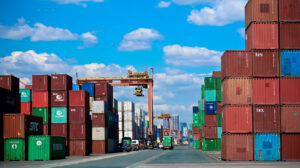Philippine growth forecast upgraded
THE ASIAN Development Bank (ADB) on Thursday said it had raised its growth forecast for the Philippines this year, but warned that a slowdown in global growth and a spike in commodity prices could threaten recovery. In its Asian Development...

THE ASIAN Development Bank (ADB) on Thursday said it had raised its growth forecast for the Philippines this year, but warned that a slowdown in global growth and a spike in commodity prices could threaten recovery.
In its Asian Development Outlook 2022 Supplement, the multilateral lender said the country’s gross domestic product (GDP) is now projected to expand by at least 6.5% this year, higher than its 6% forecast made in April.
The latest estimate is at the low end of the government’s recently revised 6.5-7.5% target for 2022.
“The growth forecast for the Philippines is raised from 6% to 6.5% for 2022 on a stronger-than-expected Q1 performance, underpinned by rebounds in investment and household consumption,” the ADB said.
The latest GDP projection for the Philippines tied with Vietnam as the highest in Southeast Asia. It is also above the ADB’s 5% growth forecast for Southeast Asia, which was raised from 4.9%.
“The Philippine economy’s growth momentum has accelerated close to its ideal growth path. Strong domestic demand supported by a pickup in employment and remittance inflows, private investment expansion, and large public infrastructure projects will underpin the country’s recovery from the economic impact of the pandemic,” ADB Philippines Country Director Kelly Bird said in a statement.
The government further reopened the economy this year amid wider coronavirus disease 2019 (COVID-19) vaccination coverage and the “relatively mild” impact of the Omicron variant. In the first quarter, GDP grew by a better-than-expected 8.1%.
The ADB said mobility data showed work and recreation are now at pre-pandemic levels, while private sector indicators such as manufacturing, industrial production and imports also continued to expand.
However, the Philippine economy faces several risks to growth in the second half, such as “sharper-than-expected slowdowns in major industrial economies, possible sustained elevated global commodity prices, and tighter financial conditions,” the ADB said.
The government is poised to continue ramping up infrastructure spending, particularly on priority projects under the “Build, Build, Build” program. These include ADB-funded projects such as the Malolos Clark Railway, South Commuter Railway, EDSA Greenways Project, and Metro Manila Bridges.
Meanwhile, the ADB retained its Philippine GDP forecast at 6.3% for 2023, “as financial tightening and a broader pass-through of price pressures weigh on demand.”
This is below the government’s 6.5-8% target for 2023, but the second-highest in Southeast Asia, after Vietnam’s 6.7% GDP projection for 2023.
The multilateral lender also raised its average inflation forecast for the Philippines this year to 4.9% from the 4.2% estimate in April.
This is below the Bangko Sentral ng Pilipinas’ 5% average inflation forecast for the year.
Inflation accelerated to a near four-year high of 6.1% in June, bringing the six-month average to 4.4%.
For 2023, ADB hiked its Philippine inflation forecast to 4.3%, from 3.5% in April.
WAR, INFLATION
Meanwhile, the ADB cut its growth forecast for developing Asia this year and 2023, as the economic outlook darkened due to the protracted war in Ukraine, aggressive tightening by central banks, and a slowdown in China.
Reflecting the dimmer global outlook, the ADB downgraded its 2022 growth forecast for developing Asia to 4.6%, slower than the 5.2% projection in April.
Developing Asia is projected to grow by 5.2% in 2023, slightly lower than the previous 5.3% forecast.
“Risks to developing Asia’s economic outlook remain elevated and mainly associated with external factors. A substantial slowdown in global growth could hurt exports, manufacturing activity, and employment prospects, and cause turbulence in financial markets,” the lender said.
The ADB noted that aggressive monetary tightening by central banks, including the US Federal Reserve, might hurt growth and rattle financial markets. The Russia-Ukraine war may continue to drive up prices in energy and commodities, which will affect the region’s growth.
“Rising food prices and shortages, in particular, could threaten food security and heighten social tensions in some economies. From within the region, downside risks could arise from the potentially lingering effects on supply chains from (China’s) latest round of lockdowns and the country’s growth slowdown, which could hinder developing Asia’s growth momentum,” it added.
The ADB also raised the inflation forecast for this year to 4.2% from 3.7% and next year to 3.5% from 3.1% due to higher fuel and food prices.
“Inflation pressures in the region are, however, less than elsewhere in the world,” it said. — D.G.C. Robles
























